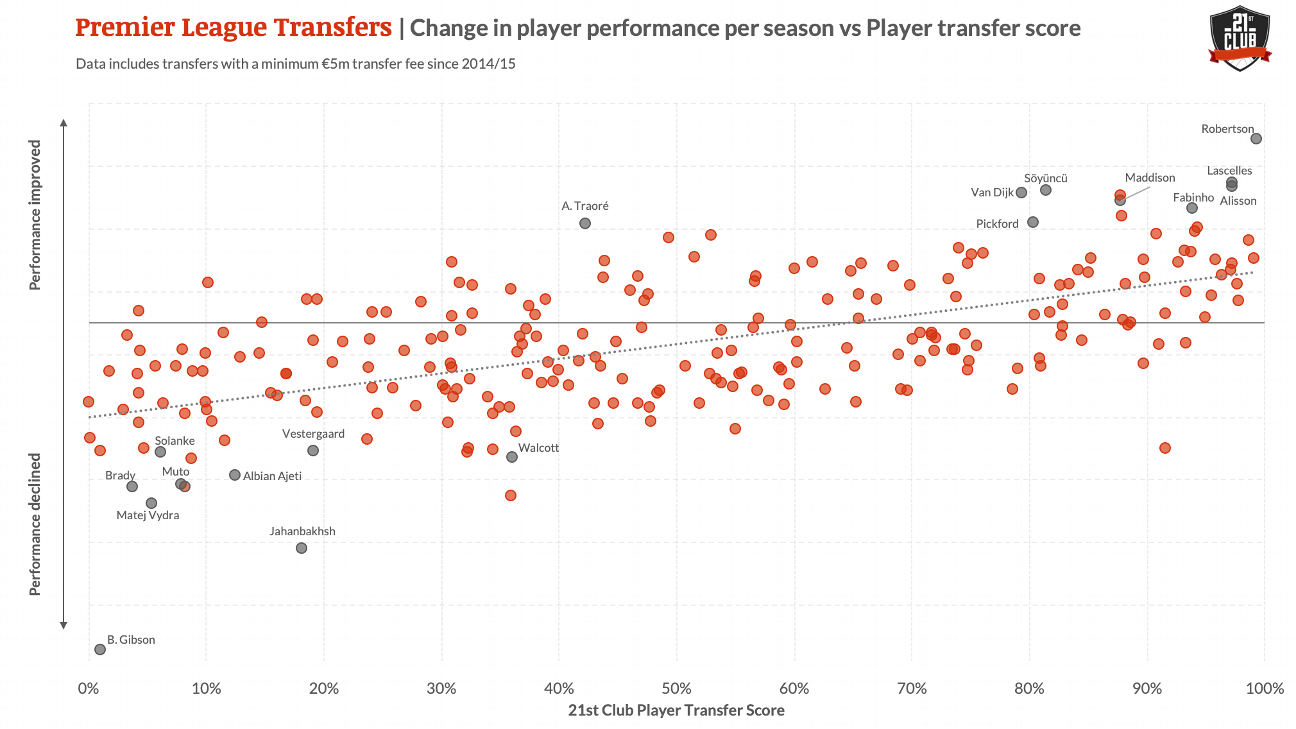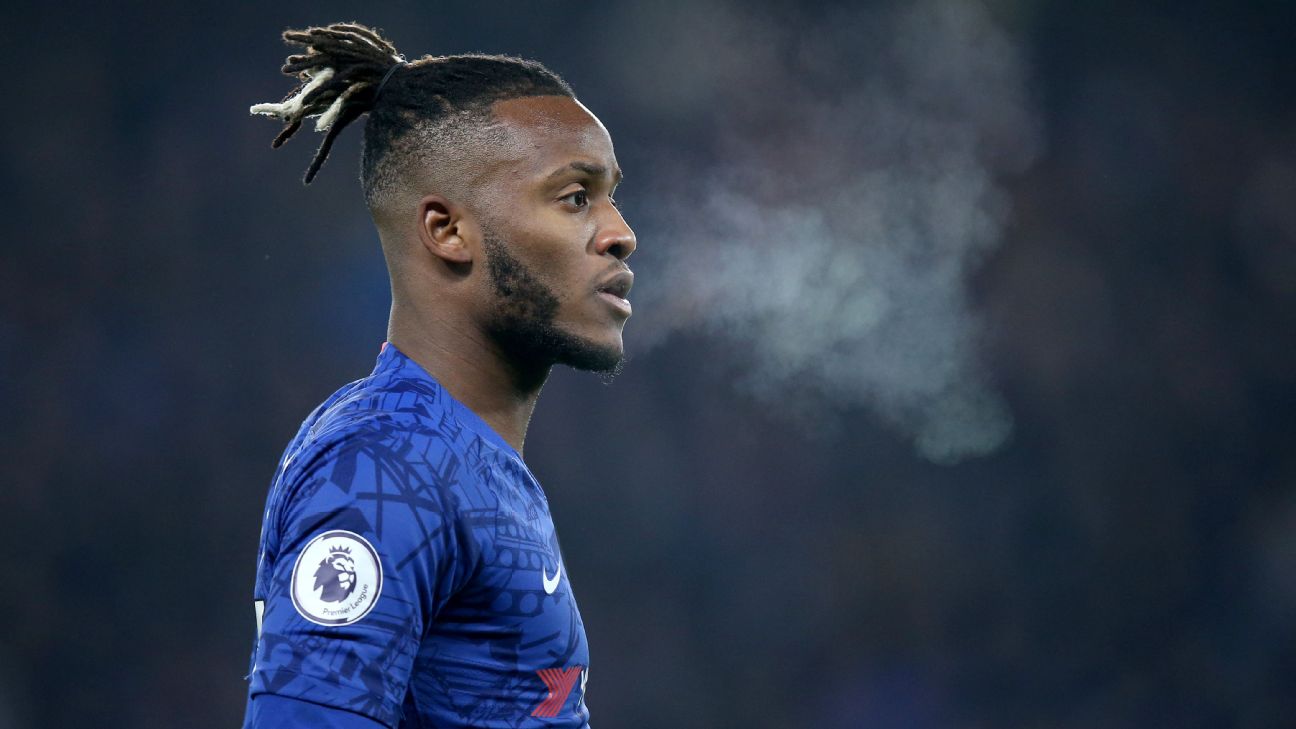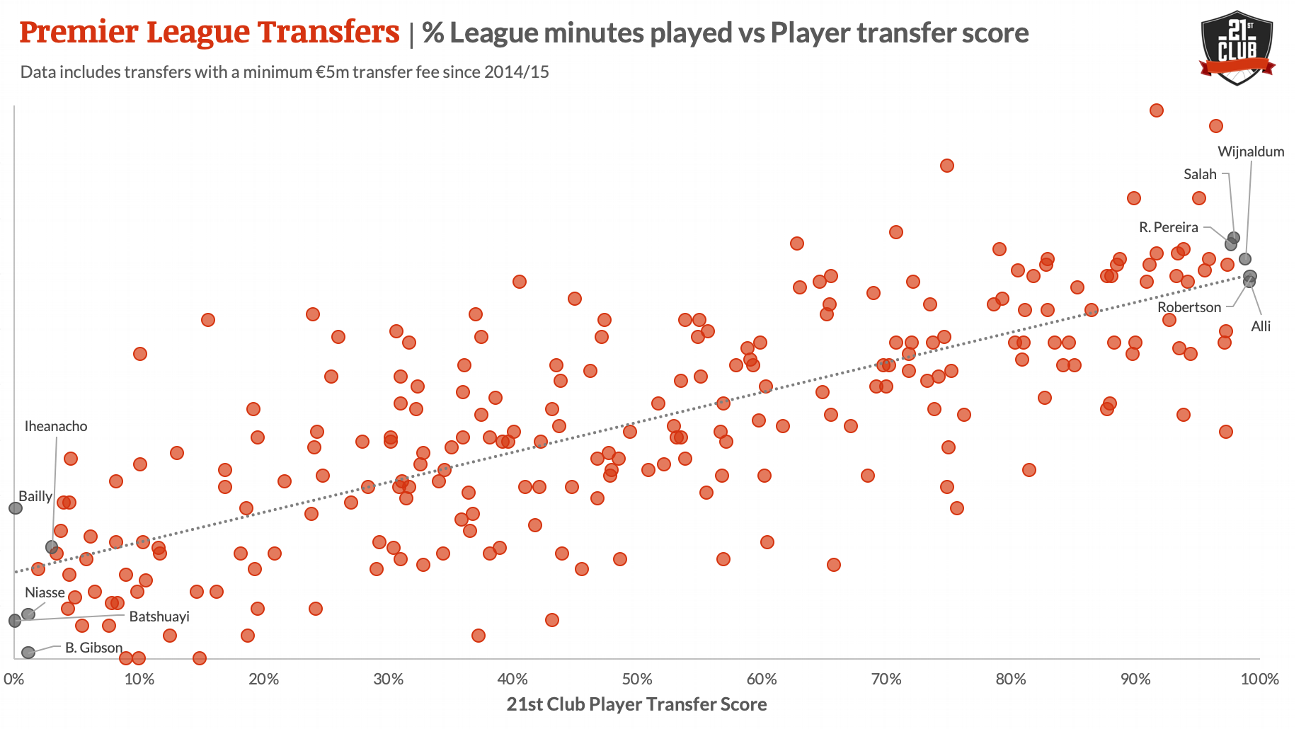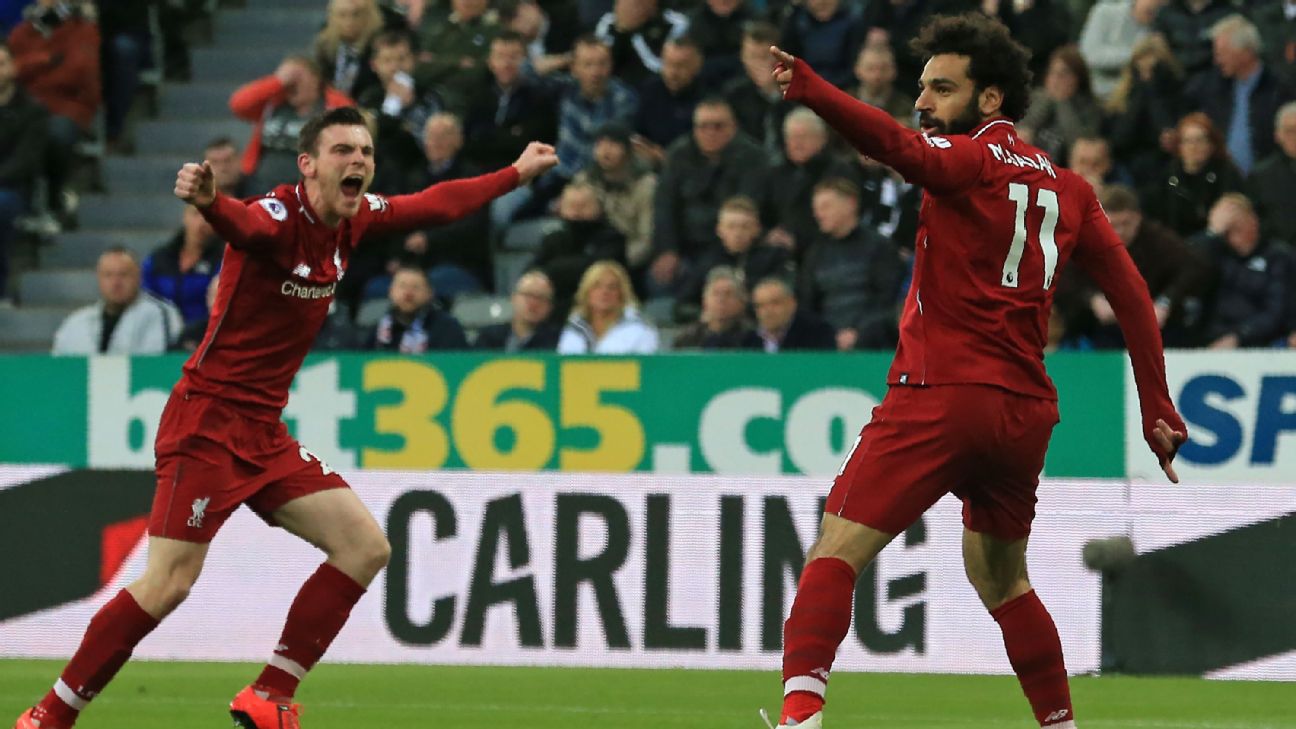Products You May Like
It’s hard to imagine it now, but not everyone loved Liverpool’s signing of Virgil van Dijk when it was confirmed on Jan. 1, 2018. Although the fee was in keeping with the percentage of revenue big clubs typically spend on big signings, the raw total seemed shocking. It was €85 million, which shattered the previous record-fee for a defender: Manchester City’s €58m move for Benjamin Mendy just a few months prior.
Most infamously, the BBC’s Alan Shearer slammed the move: “No, he is not worth it at all.” The former Newcastle great later went on: “He is good, but £75m? No.”
Van Dijk didn’t have the kind of pedigree we typically associate with record-breaking moves. He wasn’t on every “next-big-thing” list, he didn’t come through any of the Dutch finishing-school academies like Ajax or PSV, and he didn’t make his debut for the Netherlands until after his 24th birthday. Two seasons before he moved to Anfield, Southampton had scooped him up from Celtic for €16m. While he was certainly impressive in the Premier League, he wasn’t even necessarily in the conversation for “best defender in the world.” Hell, he wasn’t necessarily even viewed as the best defender in the Premier League.
Skepticism over the fee wasn’t just talking for the talking heads, either. The folks at soccer consultancy 21st Club agreed with Shearer. Their player-valuation algorithm takes into account a number of factors — historical comps, a holistic player rating, and playing characteristics — to determine an estimated market value for every player. At the time, they rated VVD as a €35.8m player.
All of that, of course, has changed. Liverpool have made two Champions League finals since he arrived, and barring a meltdown of historic proportions, they’re going to win their first league title in 30 years. Van Dijk, meanwhile, is the defending UEFA and Premier League Player of the Year, and his arrival directly coincided with Liverpool’s transformation into the best defensive team in the world.
Any immediate assessment of a transfer is, therefore, a projection, an educated guess as to how the new player will interact with his new team and his new manager. However, with a couple of years of hindsight, we can assess which deals have worked out and which ones haven’t. So, we’ve joined forces with 21st Club to choose the five best and five worst transfers in the Premier League since 2014-15.
To be as objective as possible, we’ve created a framework that awards a score to all of the deals:
– 35 percent of the score: the percentage of minutes the player has played for his new club
– 25 percent: the price a team paid versus Transfermarkt’s valuation (lower than market value earns a higher score)
– 15 percent: how much the player’s rating from 21st Club has improved (or declined) since the deal
– 15 percent: how the player’s market value according to 21st Club has changed
– 10 percent: the actual transfer fee (players who cost less are given a higher score)
For purposes of comparison, we’re only including players who are still with the team they transferred to and players who cost at least €5 million.
(Oh, and if you’re curious: Van Dijk didn’t make the cut. He rated as the 52nd-best move since 2014-15 mainly because of how much he cost compared to his market value. However, that value has since risen to €88.2m — more than the initial fee — and Van Dijk has become the highest-rated player in the entire dataset.)
The best transfers in the Premier League
1. Andy Robertson, Hull City to Liverpool, 2017 — Fee paid: €9m (Current value, per 21st club: €98m)
2. Dele Alli, MK Dons to Spurs, 2015 — Fee: €6.6m (Value: €63m)
3. Georginio Wijnaldum, Newcastle to Liverpool, 2016 — Fee: €20m (Value: €67m)
4. Mohamed Salah, Roma to Liverpool, 2017 — Fee: €42m (Value: €119m)
5. Ricardo Pereira, Porto to Leicester, 2018 — Fee: €22m (Value: €29m)
The headline sounds ridiculous: Little Known Fullback from a Relegated Team With a Bad Defense Almost Immediately Becomes a Starter for the Best Team in Europe. But that’s exactly what happened. While Robertson’s value has increased FOURTEEN-FOLD since his move to Liverpool — up to €98m — what really pushes him up to number one is how well and how often he’s played.

Among all the players who fit our criteria, Robertson’s rating has improved the most. Since 2014-15, the only transferred players with more assists than him are Kevin De Bruyne, Alli, Roberto Firmino, Raheem Sterling, Leroy Sane, Son Heung-min, Paul Pogba and Salah. The difference, of course, is none of them are defenders, while
Robertson is. In addition to contributing so much in attack, he’s a consistent starter for the team that 21st Club rates as the best defense — and best team — in the world.
Along with Robertson, Dele Alli and Georginio Wijnaldum perhaps speak to an oft-overlooked nugget of transfer-window wisdom: there’s value to be found in the lower leagues even when you’re the biggest, richest teams in the world. Both Robertson and Wijnaldum were sold by teams preparing to play their next seasons in the Championship, while Tottenham grabbed Alli from a team that was playing in League One. With the likes of Norwich’s Emiliano Buendia and Aston Villa’s Jack Grealish performing at a high level for teams that look like favorites for relegation, there should be some opportunities for smart teams to add key contributors for discounted fees this summer.
The other standout factor from this top five is that, well, 60 percent of them play for Liverpool. And it’s not just this select quintet, either. Alisson’s move from Roma ranks ninth, Roberto Firmino’s switch from Hoffenheim ranks 11th and Fabinho‘s transfer from Monaco ranks 16th. On the other end of the spectrum, Bournemouth’s purchases of Jordon Ibe and Dominic Solanke rank in the bottom 20 of the transfer score. Both players came from Liverpool.
“Liverpool have become the blueprint for transfer success. They have become the best team in the world by being patient in the transfer market,” said AJ Swoboda, managing director for the Americas at 21st Club. “Liverpool’s front three cost less than €120m but are now worth closer to €350m. During the same period, their strategy around moving players on has also been smart. Coutinho was sold for around €150m to recoup the entire fees paid to acquire the front three.”
At the end of the 2014-15 season, the club had whimpered out of the Champions League group stages, finished sixth in the Premier League with a measly plus-four goal differential, and just sold Raheem Sterling to Manchester City. According to 21st Club, Sterling is the best player other than Van Dijk to transfer to a Premier League team since then. Liverpool made up for that loss by adding numbers three through six: Robertson, Alisson, Salah and Sadio Mane, in that order. Wijnaldum (10th), Firmino (13), and Fabinho (18) all rank in the top 20, too.
However, the year after 2014-15, Leicester City did the one thing Liverpool have yet to do. They’ve since torn that title-winning team down, replaced all the starters other than Jamie Vardy and Kasper Schmeichel and are crashing the Top Four party once again. Their “re-rise” has mainly been buoyed by savvy acquisitions of affordable players from outside the Premier League either across Europe or, in the case of James Maddison, from the Championship. The transfers for Maddison, Caglar Soyuncu and Wilfred Ndidi all rate out positively, but none quite as highly as Pereira.
“Transfer market inflation has somewhat pivoted the transfer strategy of top clubs and made them look elsewhere for younger talent, with some of the best examples being Salah and Pereira,” Swoboda said. “It’s important to consider the quality of foreign teams however to understand the risk associated. Roma were around the level of the sixth-best team in the Premier League when Salah signed and Porto were around seventh when Leicester signed Pereira. When the performance levels are considered, these two transfers in particular were similar to signing players from well-established Premier League sides.”
The worst transfers
1. Michy Batshuayi, Marseille to Chelsea, 2016 — Fee: €39m (Current value, per 21st Club: €10m)
2. Eric Bailly, Villarreal to Manchester United, 2016 — Fee: €38m (Value: €10m)
3. Ben Gibson, Middlesbrough to Burnley, 2018 — Fee: €15m (Value: €1.4m)
4. Oumar Niasse, Lokomotiv Moscow to Everton, 2016 — Fee: €18m (Value: €2.7m)
5. Kelechi Iheanacho, Manchester City to Leicester, 2017 — Fee: €28m (Value: €9.1m)
Bailly and Batshuayi grade out as by far the two worst transfers since 2014-15. Each deal is awarded a percentage score, with Robertson, Alli, Wijnaldum, and Salah are the only players to reach at least 70 percent. Batshuayi is at 14 percent, Bailly at 15, and no other deal is below 21.
“Eric Bailly and Michy Batshuayi have been less successful than expected for different reasons,” said Aurel Nazmiu, an analyst with 21st Club. “Financially, they both cost more than double their market value at the time, so there is that initial question on the prices paid. With Batshuayi, our analysis has also shown that players from France have cost 17 percent more than the ‘market rate’ for similar players, albeit without any additional performance benefit.”
While Bailly and Batshuayi were both over-pays when compared to market value, they weren’t the worst in this regard.

Bournemouth paid 14 times the market value (€2m, compared to a fee of €28m) to acquire Jefferson Lerma from Levante. The other deals that exceeded their market values by at least 10-fold: Liverpool’s move for Divock Origi from Lille, Southampton’s signing of Jan Bednarek from Lech Poznan, and Arsenal’s acquisition of Callum Chambers from Southampton. On the opposite end of the spectrum is another Arsenal centerback: David Luiz, who cost €8.7m despite a market value of €20m.
However, as Gunners fans who may or may not be scheduling a trip to the optometrist after reading the previous sentence will likely tell you: beating the market does not a successful transfer make. Quite simply, a deal can’t be a good deal if the acquired player doesn’t play at all, which is why it’s given the heaviest weighting in our scoring system.
The one thing all five of these names have in common: They haven’t really been on the field much.

Batshuayi has started 26 league games since moving to Chelsea in the summer of 2016 — and only four of those starts have come for Chelsea! Bailly has nearly doubled Batshuayi’s number of starts (48) but that’s not saying much as he hasn’t started more than 11 games since 2016-17 and is yet to appear in a game for the Red Devils this season.
Since moving over from Middlebrough, Gibson has appeared in only one Premier League game for Burnley, which makes Niasse and Iheanacho — neither of whom have played more than 1,000 Premier League minutes in a given season — worthy of multiple supporters’ songs and at least one bronze statue outside Goodison Park and King Power Stadium respectively.
While “sign guys who you are going to play” isn’t really a useful takeaway — these players often don’t play because their coaches don’t deem them good enough or because of significant injury lay-offs — there is a larger trend at play. Three of the bottom five players are strikers, and it doesn’t just end there: Connor Wickham (Sunderland to Crystal Palace), Matej Vydra (Derby Country to Burnley), Solanke (Liverpool to Bournemouth), and Yoshinori Muto (Mainz to Newcastle) all rank in the bottom 20, too.
“Arguably the toughest skill in football is being able to put the ball in the back of the net,” Nazmiu said. “We’ve been able to calculate that attacking players are more valuable than defensive players. They rely more on individual talent than collective work. Our analysis has also shown that over 50 percent of strikers signed by Big Five leagues in January fail to score in the league between January and the end of the season. So it has historically been a difficult position to get right in the transfer market, and a task made more difficult with the premiums paid for strikers.”
That proposition seems problematic, but as has become a theme here, copying Liverpool isn’t the worst place to start. After all, Roberto Firmino played mainly as an attacking midfielder in his final season at Hoffenheim and didn’t become Liverpool’s starting center-forward until after Jurgen Klopp was hired in the middle of the 2015-16 season.
How do you navigate the conundrum of “striker is both the most valuable and volatile position on a soccer field?” Well, you could always ignore the position altogether.
